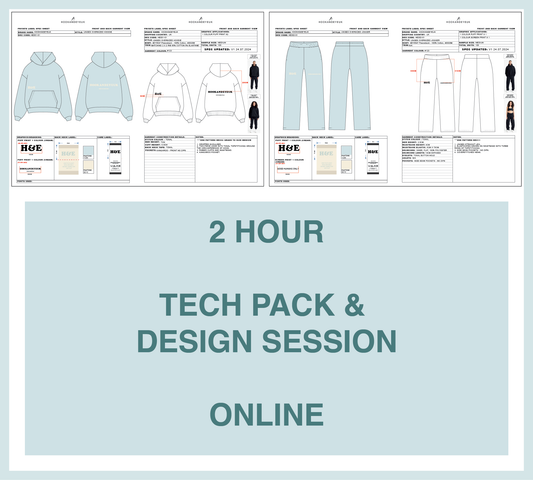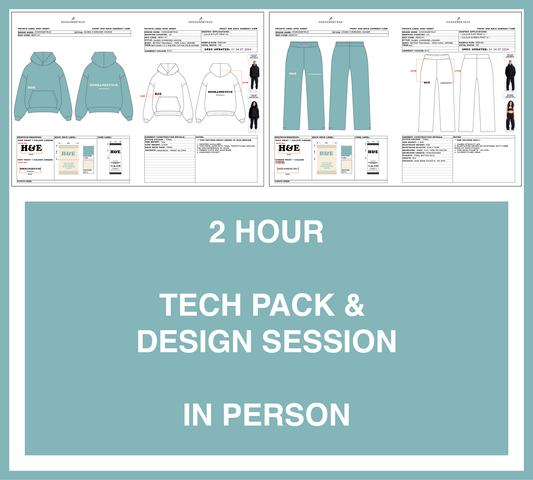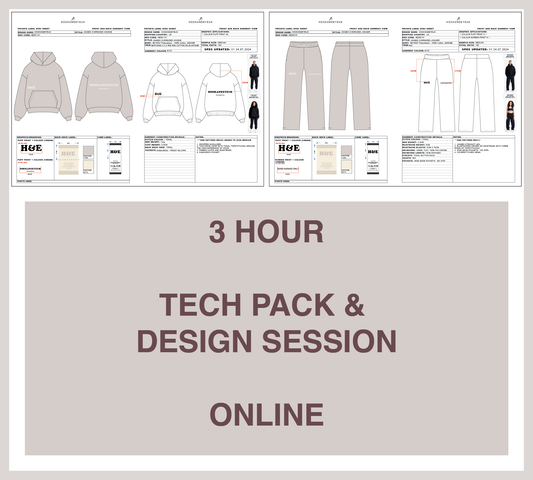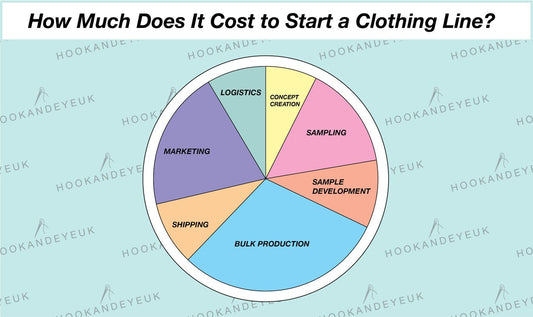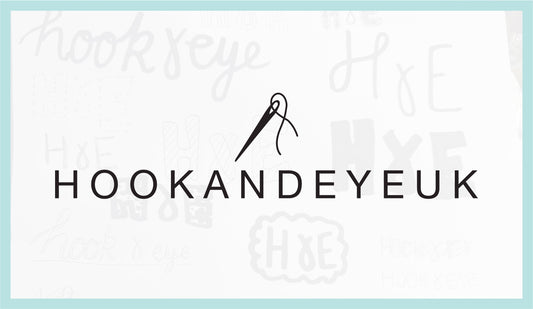How much does it cost to get clothing samples made? Here's exactly how clothing manufacturers work out your sampling costs!
Pricing for clothing samples can be confusing and it’s easy to end up wasting a lot of money unnecessarily and getting stuck in several rounds of sampling. But it doesn’t have to be this way! There’s several things you can do to sample your clothes in a cost-effective way and get the most out of your sampling process; we’re going to show you how below...
How much is a clothing sample?
One of the most common questions we are asked when new customers first get in contact with us is ‘how much is a clothing sample?’. We get it of course; you want to know what you’re signing up for and what to expect financially.
The truth is that sampling costs for clothes are very specific to your individual design. There’s many different ways in which to sample your garments, and factors such as your choice of fabrics, graphic applications and complexity of construction all play a part in making up your sample costing.
That being said, the basic principle of how manufacturers cost your samples is pretty simple and becoming more familiar with that will give you more insight into the process and understand how those costs have been calculated (and to know how you can save yourself money!).
Higher complexity = more work = higher cost to make a sample
Essentially, the more complex your designs are, the more work the manufacturer has to do, and the more your clothing samples will cost!
Take a look at this simple example below;

The two tees in the image above look really similar right? However #1 is cheaper to sample than #2 and here's why...
Although both fabrics are 100% cotton jersey, there is a big difference in fabric weight. Heavier fabrics are more expensive to make and more expensive to ship (garment shipping costs are calculated on weight), so design #2 above has a higher cost than #1.
The second reason that producing a clothing sample for #2 is more expensive is found in the graphic.
Both #1 and #2 use screen print as the means of graphic application. Screen print works by laying a screen over a garment and passing ink through a section that hasn't been blocked out. Each colour requires its own screen. More colours equals more screens required and more work for the manufacturers. Whenever there's more work involved it increases sampling costs. #1 has only one colour and #2 has four colours making it more expensive.
So now we’re clear on the basic principle of clothing sampling costs, let’s look in a bit more detail at how clothing samples are priced.
Why are clothing sampling costs so much more than bulk manufacture costs?
When you go through garment sampling, you’re basically paying for a development process. Development in garment manufacture terms essentially means taking the clothing design from concept all the way through to a successful sample ready for bulk production. This stage is where a lot of the work is – a lot of things have to be worked out such as;
- The pattern for the garment
- The best method of constructing the garment
- Sizing graphics and any graphic application set up, such as creating screens for screen print, or digitised files for embroidery
Once this foundation work is complete, it makes the bulk clothing production run a lot quicker and smoother, as everything has already been prepared, and the full bulk production runs a much higher quantity of items, meaning the process can be made as efficient and cost-effective as possible (which is reflected in the unit price).
Below are our top tips for reducing your garment sampling costs and getting the most out of your money!
Sampling Tip 1: Sample multiple colours at the same time

When you design the same garment base shape in the same fabric and it's just the colour of the fabric that's changing, the manufacturer can work on the clothing samples at the same time. That makes it quicker for them and therefore cheaper to make.
The best thing to do is sample your garment shape in all the colours you'd like in one go (even if you plan to drop some of the colours later on), as you will basically get a ‘group discount’.
Sampling Tip 2: Reduce the need for multiple sampling rounds by having airtight tech packs!
One of the most common causes of multiple sampling rounds is ambiguity in tech packs.
A good tech pack is the foundation of your sample and should have full details about everything from fabric, to graphic placement, to details such as drawcords, aglets and zips. If there are any elements that haven’t been specified, it’s open to interpretation, and most manufacturers will simply choose whatever the cheapest or easiest option is for them (which might be different to what you were expecting, leading to you dissatisfied with your sample).

If you'd like some more information on tech packs, here's our handy guide to tell you everything you need to know about tech packs for fashion brands.
Sampling Tip 3: Achieve the fit you want first time by providing a clothing fit reference
Getting a good fit first time from scratch is really tricky and can take multiple rounds of sampling to refine. The best way to achieve the garment fit you want is either by using a tried and tested pattern (a pre-developed style that the manufacturer already has the pattern for, which you have either tried on or seen pictures of on a model), or by providing your own fit reference sample (a clothing item you already have).
This ensures that you know what you are getting and should get a perfect or near-perfect sample first time – saving money on any further development. Want to learn more? Here's our guide to getting your samples right the first time round.

Sampling Tip 4: Simplify construction to reduce sampling and bulk costs for your clothing
This is something to bear in mind when you are designing your garment and building the tech pack, if you want to go a more cost-conscious route. As we touched on earlier, higher complexity equals higher cost as it is more work for the manufacturer, so consider keeping complex construction features such as lots of panelling, pockets and zips to a minimum to keep your sampling costs (and bulk manufacture unit costs) lower.
You can work with your designer or developer to discuss how to simplify a garment whilst retaining the integrity of your design. Take a look at the example below; the trousers on the left feature complex details such as a fly-front zip, 3D patch pockets with pleats, panelling and adjusters at the hem. The trousers on the right have been simplified to feature an elasticated waistband with a faux fly front, simpler pockets, and piping at the side seams instead of more complex panelling.

For more tips, check out our blog post on the most cost-effective way to design clothes!
In Conclusion: How much do clothing samples cost?
Clothing sampling costs will be calculated depending on your individual design, taking into account the construction methods, fabric used, pattern cutting complexity and graphic applications used. More complex items take more work and therefore cost more!
Sampling costs are much higher than bulk manufacture unit costs because a lot of work goes into figuring out how to make your garment and doing all the necessary preparation and set-up. Manufacturers hardly make any money from sampling. Sampling is just a means to secure the bulk manufacture order. This is why lots of manufacturers make you commit straight to bulk manufacture and send you a 'free sample'. The samples are never in fact 'free', they just hide the sampling costs in your bulk manufacture costs (btw, Hook and Eye UK don't do this, we allow clients to sample without having to commit to bulk manufacture).
The more information you can give your manufacturer the better; reduce the need for multiple rounds of sampling by investing in a solid tech pack and providing a fit reference. For more help with this, see our Ultimate Guide To Getting Your Sample Right In One Go.
In our tech pack and design sessions at Hook and Eye UK, we will always work with you on the above points to create fully comprehensive tech packs that will build a solid foundation for your garment samples, and take into account any budgetary needs you have.
If you’re ready to get started, click here to book a tech pack and design session.
Love the H&E Team xx
P.s We're here for you of you have questions drop us a WhatsApp on +447939591255


